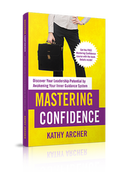Understanding Pre-Meeting AnxietyIf you are a nonprofit leader and have a tough meeting coming up, you will want to feel empowered going into it. Tune into Sandra's story to build your confidence going into challenging conversations! Sandra's Story: Facing the Fear of a Tough MeetingWhen Sandra came to our coaching call, she was preparing for a meeting with the Executive Director about her performance. Sandra was dreading the meeting. She knew her boss would make her feel stupid, small and even scared.
But that's not how Sandra anticipated the meeting was really going to go down! Sandra knew she would feel attacked by her bossSandra knows that "help" from her boss is typically in the form of them pointing out:
Sandra's anxious thoughts were almost out of controlEver since Sandra's boss had scheduled the meeting, Sandra had been rolling around the worst-case scenario in her mind. She imagined being fired on the spot, being raked over the coals and being belittled, berated and bullied. Hence, the knot in her stomach! Sandra had a history of not feeling supported by her bossIt's no wonder Sandra was dreading the meeting! Past meetings had not gone well. Most of what Sandra feared had happened in the past.
It was time for Sandra to change her perspectiveJust because that is how Sandra's ED has communicated in the past does not mean that Sandra has to believe it means she is incompetent or not cut out for leadership. Sandra can choose to pick between the well-intentioned but still hurtful comments and find out what's valuable in between those comments. Sandra took back control of her thoughtsWhether it is this conversation with her boss or another, Sandra gets to decide how she will proactively continue to grow and develop in her nonprofit leadership role. Shifting Your Mindset for ConfidenceSandra enlists the support of her nonprofit coachSandra brought this upcoming conversation to our coaching call. In past coaching sessions, we'd already talked about mindsets, perspectives and lenses, so she knew her mindset mattered most! To plan to feel more confident in the upcoming conversation, we took a look at the kinds of messages Sandra's boss might share:
The Power of Perspective: Changing Your MindsetLeadership MINDSET # 1If Sandra chose to see herself as flawed, she would take these kinds of comments to heart. Imposter Syndrome would take over, and the knot in her stomach would grow to a tightening in her chest. Sandra could see how her thoughts could snowball:
Leadership MINDSET #2 (THE BETTER OPTION)I invited Sandra to PAUSE, and take a breath. I asked what might happen if she chose to hear the messages differently. Sandra PONDERed and considered the comments above and then what else might be true:
Mindset # 2 helps Sandra feel more confidentSandra then used curiosity to PIVOT to new thoughts:
Instead of feeling beaten down by taking time to move through the Inner Guidance Cycle, Sandra felt back in control. She was ready to take the core of the feedback (too much overtime) and hear it for what it is—Feedback. Believing in Your Potential: The Foundation of ConfidenceHow does this help Sandra remove the knot in her stomach before the meeting?By knowing she has control of her thoughts, choosing how to hear messages and intentionally choosing not to take things personally in the meeting but focus on the content, Sandra lessened the emotional charge going into the meeting. When Sandra chooses her thoughts, she feels her confidence soar!I reminded Sandra that feeling confident in a meeting isn't about what someone else says or thinks. Sandra smiled and nodded. She's been reading Mastering Confidence. I know, she said, it's what I believe. How confident you FEEL starts with what you BELIEVE.What you believe about yourself is what matters most. I asked Sandra:
I reminded Sandra that if she believes those things, the tone with which her boss shares those messages in that meeting is less relevant than the content and what she chooses to hear, believe and take action on. Creating an If/Then Plan for ComposurePreparing for Triggers: Sandra's If/Then StrategyWhile feeling more confident, Sandra was still worried about being triggered and losing composure in the meeting. Sandra wanted to prepare to stay composed in her talk with her ED. She'd recently reviewed the webinar: How to Prepare for a Tough Talk so you can handle it with integrity in The Training Library. She'd learned the power of being prepared for getting triggered with If/Then plans. She asked if I could help her prepare an If/Then plan in case she got triggered. Sandra already knew what kind of comments might trigger her and cause her to lose her composure.
We prepared her If/Then plan and she practiced saying her response.
Now, the knots have turned to butterfliesSandra was still nervous but felt way more confident and in control of her responses! She messaged me later and said the meeting was still hard, but she left feeling in control of herself, her responses and her future. What's Next? Taking Charge of Your Leadership JourneyWill you do what Sandra did? If you want to ditch the knot in your stomach before your next uncomfortable meeting, then you need to get ahold of your thoughts and emotions before you go into the meeting. You need to create a mindset that allows you to take back power, your personal power. That way, you will be able to respond in a way that makes you feel empowered, and you'll be able to handle your meeting more confidently, too! ❗️❗️VERY IMPORTANT NOTE❗️❗️
I am not condoning bullying or harassing behaviour. If that happens, you must decide how to address it, find mental health support, and/or change jobs. There is no one-size-fits-all plan for how you will deal with it. Just know that you have options if your workplace is not psychologically safe. Check your policy manual for direction on what to do within your organization. Online resources
You may also find these podcast episodes helpful.
0 Comments
If you are like most leaders, you've been here: You have a precious break in the day, so you look at your endless to-do list. All tasks seem important, but you scan the list, looking for the priority items you can knock off in a few minutes. As you glance at each item, you make a mental note:
Your to-do list is like an emotional roller coaster In the time it takes to scan down the list, your emotions move from overwhelmed to anxious, then annoyed and doubtful, ending with discouraged. Pushing the to-do list aside, you begin scrolling through your inbox without realizing you've avoided doing anything on the list and, as a result, get further behind and more disheartened 😩 I get it. I've been there many, many times too! In fact, if you are like most leaders, you have a lengthy to-do list that haunts you into the wee hours of the morning and, honestly, will never get done. But why is it that we will never get through our to-do list? 💥The reason your to-do list will never get done is twofold REASON # 1 First, it's a disorganized list that is more of a holding place than a completion place.
REASON # 2 Second, we look at the list as items that need time to be completed, and we blame lack of time as the enemy 😡 ⏰ It's way more complicated than just not enough time. For example, look at your to-do list and consider:
Without taking all of that into consideration, our to-do list becomes an impossible challenge, and time becomes the enemy. But time is getting a bad rap. ❌ It's not ⏳ time's fault. The time available to complete tasks is only one small factor in managing our to-do list. There are other things to consider. Below are three steps to help you manage your to-do list with much greater success👇🏻 QUESTION: How do I get done, what matters on my to-do list? ANSWER: You create order and awareness. 1) First, start by prioritizing your to-do list into some semblance of order That way, your to-do list can become a tool working for you instead of a threat against you. 2) Next, let go of inappropriate expectations of your to-do list You change expectations of your to-do list by shifting your mindset from believing your to-do list is a list of things that need doing to a holding place for projects and tasks.
3) Finally, move a few key items to each day's agenda, plan or priorities When you only have three things to get done each day, you will check them off with greater speed and satisfaction.
But we are still overlooking something That covers the tactical side of getting through your to-do list. But there is something bigger that needs addressing. 🐘 The elephant in the room is the emotions you felt when you scanned the list.
Your emotions play a big role in productivity Many of us are unaware of our feelings, let alone how our emotions affect our productivity. We can choose our responses better by slowing down and getting a better awareness of what we are experiencing and how our emotions distract us from getting done what matters most. If you want more help with this, read this next: Why Your Emotions Are Sabotaging Your Productivity If you've been meaning to
NOW is the time to plan HOW you will do that 👆🏻 growth.
Ugh. Interruptions! They would linger at my door, peek 👀 in, and ask if they could ask a quick question...45 minutes later, I'd be trying to figure out where I was on the report, which took another 15 minutes to get settled back in, only to be interrupted again. You've been there, too, even if it is virtually. The rings, dings and pings never stop and constantly distract you. As a leader, your team relies on your guidance and support. However, frequent interruptions from team members seeking advice or addressing concerns can disrupt your workflow. Creating an environment that allows you to focus and be uninterrupted is essential for maximizing your productivity as a leader in a nonprofit organization. Here are some effective strategies to help you minimize and eliminate distractions. 1 - Address Urgent Client Needs Let's address this first. In small nonprofit organizations, clients in crises often require immediate attention. While it's crucial to prioritize their needs, it's equally important to establish your boundaries to prevent them from becoming constant interruptions. Where possible, designate specific times during the day to address urgent client matters and communicate these time blocks with your team and clients.
Empower your team to handle initial client inquiries. This allows you to focus on more complex or high-priority cases.
2 - Set your boundaries Get clear that you're unavailable and for how long ⏳
3 - Communicate your boundaries to your team
👽 BONUS: Check out the CHATGPT-generated email at the end that you can use as a draft to communicate to your team)
4 - Reinforce your boundaries Set up your workspace in a way that discourages interruptions. Use visual cues to communicate your availability and to signal your focused state.
5 - Deal with interruptions Not all interruptions are avoidable, so handling them effectively is important. Before allowing someone to interrupt your focused time, assess the urgency and importance of their request. This post might help you: When interruptions come, don't let them in:
6 - Be strict ---> with yourself. You are your own worst enemy. Recognize that your internal distractions can often be more challenging than external ones. Your ability to stay focused requires willpower and self-discipline. Be mindful of your tendencies to get sidetracked and implement strategies to combat them. Recognize that your internal distractions can often be more challenging than external ones. Your ability to stay focused requires willpower and self-discipline. Be mindful of your tendencies to get sidetracked and implement strategies to combat them. Your lack of focus comes more often from inside than outside. Focus requires an incredible amount of willpower. Read these blogs to discover more about staying focused. Moving Beyond Procrastination: 3 Powerful Strategies to Empower You to Take Action 3 Productivity Hacks for Leaders that are Guaranteed to Boost Your Mood Get rid of the distractions in your line vision
Deal with your phone Your phone can be a significant source of distractions. Take control by:
By distancing yourself from your phone, you create a physical separation that reduces the temptation to engage with it and allows you to focus more fully on your work. Remember, creating an environment that minimizes distractions requires conscious effort and consistent practice. By implementing these strategies, you can establish a productive work environment that empowers you as a leader in a nonprofit organization. Check out this letter to help you communicate your boundaries👇🏻
BONUS: CHATGPT Generated Email to send to your staff Do you need help communicating your boundaries to your staff? Use the following CHATGPT Generated Email to send to your staff as a draft to help you send a clear message. * * * * * * * * * * * * * * * * * * * * * * * * * * * * * * * * * * * * * * * * * * * * * * * * * Subject: Establishing Focused Time for Enhanced Productivity and Reduced Interruptions Dear [Team], As we continue our mission to positively impact the lives of those we serve, I wanted to share an important update that will help us enhance our productivity and efficiency while addressing interruptions effectively. Recognizing the value of uninterrupted work time, I am implementing a new practice of setting aside dedicated, focused time for each of us to tackle our tasks and responsibilities without unnecessary interruptions. This will enable us to dive deep into our work, foster creativity, and accomplish more meaningful results. During these focused times, I kindly request your cooperation in refraining from interrupting one another unless it is an urgent matter that requires immediate attention. By respecting these boundaries, we will be able to maximize our productivity while ensuring that critical client needs are met in a timely manner. To support this initiative, here are a few guidelines we will follow: 1. Clearly Communicating Availability: Each team member will communicate their preferred focused time slots, which will be shared with the entire team. This way, we can plan our schedules and interactions accordingly, reducing unexpected interruptions. 2. Utilizing Email and Collaboration Tools: Non-urgent queries or updates can be effectively communicated via email or collaboration tools like Slack or project management platforms. This way, we can address them at a time that is most suitable for our focused work. 3. Prioritizing Urgent Matters: For urgent client or organizational matters that cannot wait, we will maintain open lines of communication. However, I encourage everyone to assess the urgency and importance of requests before interrupting a team member during their focused time. 4. Empowering Autonomy: Let's foster a culture of autonomy, encouraging each team member to solve challenges independently whenever possible. This will not only build our problem-solving skills but also reduce unnecessary interruptions for guidance. 5. Respect and Support: As we embark on this new practice, let's demonstrate respect and support for one another. Celebrate achievements and milestones while understanding that focused time is crucial for personal growth and delivering exceptional results. By embracing these guidelines, we will create an environment that supports our collective success and allows us to meet the needs of our clients efficiently. I trust each one of you to contribute to this initiative and maintain a positive and productive work environment. If you have any questions, suggestions, or concerns regarding this new approach, please feel free to reach out to me directly. Your feedback is always valued and appreciated. Thank you for your commitment to our organization and your dedication to making a difference in the lives of those we serve. Together, we will achieve remarkable outcomes and continue to be a force for positive change. Warm regards, [Your Name] [Your Position] As a woman leading in the nonprofit sector, I know your days are filled with endless meetings, tight deadlines, and a never-ending to-do list. I've been there, and I know it's not always easy to stay motivated and positive when facing these challenges. When I get behind, I get irritable 😤 Any interruptions will annoy the crap out of me. The thing is, not only do I get short with others, but I also beat myself up.
The impact of less-than-productive days You, too, likely feel irritated on less-than-productive days. You also know the consequences of how an unproductive day can spill into your evening. Being short with your staff is certainly not optimal, but a cutting remark with your child can leave you feeling inept in the parenting department. I'd had enough of it! This all-too-familiar cycle was the norm for me for years. The more determined I got in the last few years to do meaningful work, the more necessary it became to be productive. Changing a few things has made an incredible difference for me. I still have less productive times, but they are fewer and farther between. I end most weeks ticking everything off of my weekly list. When you decide it's time to be more productive...this ↓ ✅ Being more productive will help you take that weekly and daily to-do list and get them done. That way, you can shut off at the end of the day, knowing you completed what was needed. ✅ Being productive at work frees up your mind and energy to shift into the rest of your life. Feeling upbeat when you come home at the end of your workday results in a much more enjoyable evening with your loved ones! Let's dive into the three powerful productivity hacks that enhance efficiency and boost mood👇🏻 3 Productivity Hacks for Leaders that are Guaranteed to Boost Your Mood 1 - Prioritize Self-Care As a dedicated nonprofit leader, it's natural to put others before yourself. However, taking care of your well-being is essential for maintaining a positive mindset and achieving productivity because: 👉🏻 It's hard to focus when you are hangry. 👉🏻 It will take you way longer to create the document when you haven't left your desk for 3 hours straight. 👉🏻 You'll find burnout knocking at your door if you don't take proper care of yourself. If you neglect self-care, you're more likely to be unproductive, experience heightened stress levels, and eventually face burnout, just like my client Nancy. NANCY'S STORY 🙋🏻♀️ Nancy was neglecting her physical and mental well-being, feeling exhausted, and struggling to be productive.
Nancy started with wanting to carve out time each day for self-care activities that rejuvenate her, like a morning meditation or an evening walk with the dogs, but she didn't always have the motivation to do that. Many of my clients have high aspirations like this but struggle to get there. To get moving in the right direction, I encourage them, like I encouraged Nancy, to start small and work to add micro-moments of wellness throughout her day. WHAT WORKED FOR NANCY Nancy began working through the course Wellness AT Work and learned how to add micro-moments of wellness into her work day. She immediately found she was feeling healthier and more productive! 👉🏻 DO THIS: Add micro-moments of wellness into your day Think about what you can do in one minute or less:
Learn more about the Wellness AT Work COURSE 2 - Master Time Management As a nonprofit leader, learning effective time management is a game-changer. Learning to manage your energy and priorities helps you have increased productivity and allows you to maintain a positive outlook. Here are the basics: ✔️ Take time to plan your week, determining the top projects and tasks needing to be done. ✔️ Break your projects into tasks which makes them more manageable. ✔️ Each day, identify your top priorities for the day ✔️ Create time blocks in your calendar to work on allocating tasks ✔️ Embrace technology tools such as task management apps, calendars, and reminders to stay organized and on track. By maximizing your time and staying focused, you'll accomplish more while reducing stress, undoubtedly boosting your mood. However, time management strategies alone won't be the simple answer. 🤔 You'll also need to manage what's happening in your head when you think about those tasks. ❗️ Just because you put "performance review" on your agenda doesn't mean you'll eagerly jump into it at the allotted time. If you are uncomfortable with conflict and know this review will be challenging, you may put it off unconsciously. Seeing it pop up on your list week after week requires you to start looking at the unconscious thoughts getting in the way. 🙋🏼♀️ SASHA'S STORY Sasha knew that she was struggling with more than time management.
WHAT WORKED FOR SASHA For example, Sasha kept putting off the annual report. It had been on her list for a month, and now the pressure was on to finish it. As she worked through the exercises...
💡 These two insights helped Sasha add some client stories to the report and ask for help with the software. She then reengaged in the task and completed it on time with a sense of pride rather than frustration. 👉🏻 DO THIS: Master your inner critic Work through The Emotions of Time Management to help you apply the time management strategies despite your sabotaging thoughts. Learn more about The Emotions of Time Management COURSE 3 - Make the best use of your productive times 🙋🏼♀️ MY STORY A few years ago, I took a deep dive into productivity. As an overachiever with high expectations of myself,
🟦 Identify your most productive times
🟦 During peak times, do the projects needing intense focus What are the things that require a level of diligence and focus? reading over and digesting a report
WHAT WORKED FOR ME 🟦 Use your willpower wisely Willpower is the age-old skill of self-control, restraint, strength, and determination. Willpower happens in your head. 🗣️ Our mind chatter tries to get us to avoid pain. 🗣️ That inner dialogue suggests to us, subconsciously, that doing a particular project on our to-do list hurts. 🗣️ Our inner voice says that if we do the task in front of us, it will be painful, hard or troublesome. So instead, that little gremlin 🗣️ inside suggests we check email again, move to a different project or head to Tik Tok, LinkedIn, or your favourite social media newsfeed. 👉🏻 DO THIS: Learn to manage your willpower Honestly, learning about willpower helped me the most with productivity. It takes resolve to push past that and get to work, especially agonizing jobs. To stay on task, get done the important work and leave feeling productive at the end of your day, you must activate your willpower. Start by: ✅ Understanding what willpower is and what it isn't ✅ Learning how to stop depleting your willpower unnecessarily. ✅ Learning how to get more willpower quickly when you need it most. I took what I learned and put it into the course Willpower Essentials: Getting Done What Matters Most Learn more about the Willpower Essentials COURSE Remember, boosting your mood and enhancing your efficiency go hand in hand. Prioritize self-care, master time management, and learn to manage your willpower, and you'll find yourself accomplishing more while enjoying the journey. Here is the thing, as a leader, you can inspire other women leaders in the nonprofit sector with your positive energy that will undoubtedly create a ripple effect within your organization and community. The choice is yours! You may have noticed that I linked three different courses above. All of them are instantly accessible to you, plus many, many more, when you join The Training Library for $19.97/month. 🤔 How much do you pay for your Prime, Netflix, Google or Apple membership? Is your growth and development (also your sanity) not worth that much too? Joining The Training Library gives you the tools to lead and live your best. I hope I'll see you in there soon! Are you a nonprofit leader who finds you intend to get a lot done each week but mournfully realize that when Friday hits, you've barely touched your to-do list? 😒 Instead, you accomplished a lot of things that other people added to your to-do list. While reacting to everyone else's demands, you didn't complete the assignments you wanted to work on. Miserably, you note that some of the unfinished items on your list were crucial tasks to move important projects forward that were truly important to you and your team. Trust me. You are not the only one who feels like this at the end of your week. Too much REACTING rather than responding Leaders spend more time acting on requests from others than completing their own priority tasks. The urgency to solve everyone else's problems leaves a manager feeling like they spend their days chasing fires and never getting anywhere 😫 If you want to get off that hamster wheel and do more of your essential work, you must be more intentional about what you do with your time rather than reactionary. ⭐️ It is critical to begin with planning You must start each week by planning your week. Before you get caught up in chasing everybody else's plans and agenda for you, you must reorient yourself to what are priorities for you. By setting aside time each week to lay out what you want your week to look like, you will have better control over what happens 👏🏻 You must get perspective 👀 Weekly planning sessions allow you to pull your head out of the sand. While putting your head down and getting work done at times is crucial, a leader's critical function is to lift their head (and their organization's head) and get a bigger picture view repeatedly. Weekly planning time is this head-up, expansive view of the bigger picture. This time allows the leader to put things into perspective for them and their organization. You need to refocus your time and priorities Weekly planning allows you to get projects, plans, and tasks into focus again. From this outlook, you can choose how to respond to your week rather than frantically reacting to whatever shows up in your inbox, at your door or desk. Creating a habit of weekly planning puts you back in control and moving forward rather than running around and around 🙌🏻 3 Steps to Creating a Weekly Planning Habit 1️⃣ Schedule a weekly time slot into your agenda First, set aside time each week to do your planning. Schedule it into your agenda and stick to it. You will need 20 minutes to an hour, depending on your responsibility level and style. Find a time that works best for you.
Set clear boundaries
❌ Do NOT book anything else in that slot. 2️⃣ Develop a list of action items for the week A) Review annual goals
📝 Write those down as action items. For Example: Your company is looking at reducing short-term disability. Perhaps you need to schedule a meeting with the working group for the short-term disability strategy. B) Review quarterly projects Next, look at the quarterly projects you have on the go. Where are you at with each of those? What needs to be done to move the project forward? 📝 Write those down as action items. For Example: If you are planning your annual staff retreat, you might have to research venues. C) Review last week's meetings Look at the previous week's schedule and identify items needing carrying forward into this week. 📝 Write those down as action items. For Example: You may have met with someone and meant to connect them to another person. Note the need to send a connecting email to the two on your to-do list. D) Review your upcoming appointments Finally, look at the upcoming week. Review your meetings that are coming up and conversations that need to happen. Once again, continue adding to your to-do list. 📝 Write those down as action items. For Example: If you have a staff meeting on Thursday, you may need to compile the agenda to send out to the attendees. Dealing with the big list of items ✅ ✅ ✅ You should now have a list of things you want to tackle in the upcoming week. For some of you, this feels overwhelming. For others, it might be refreshing. One way to look at it is that you now have everything out of your brain and in one place. There will be less chance of forgetting or losing things in the shuffle. Dumping everything onto this list, from this big-picture perspective, is, in itself, helpful.
3️⃣ Creating your plan From this list of action items, create your plan for the week.
Make weekly planning your priority Setting aside time to plan your week puts you on track to having a more productive week. Choose when you want to do this, then schedule planning time weekly into your agenda. Review your annual goals, quarterly projects, the previous week's appointments, and the upcoming week's schedule during the identified time. ☑️ From this analysis, list tasks you want to accomplish. But it won't work 🤦🏼♀️ If you read this and thought, that's lovely, but it doesn't work that way in the real world, I'm with you 💯 Even with the best of intentions, things have a way of getting in the way 😕 But is it things...or yourself? In The Emotions of Time Management course, you'll learn why those strategies alone won't work for you. ✔️ We'll uncover the emotions that hold you back and help you make those strategies work for your unique situation. ✔️ You'll discover how to overcome hidden commitments that get in the way of getting done what matters most so that you can get done what matters most. Learn more about The Emotions of Time Management here. You can do this! 🙌🏻 You can get more organized, on top of things and get done what matters most. However, it will take a bit of intentional digging into what gets in your way, and that's often what's happening inside you. Thus, you must do the inner work! Start with the system, then notice what gets in the way of the system working. That's where The Emotions of Time Management come into play. It's the inner work you must do to be the best leader you can be! |

Available on Amazon
Archives
May 2024
|
|
Leadership TRAINING for Nonprofit Leaders
Become a confident and competent nonprofit Leader: Join The Training Library membership Executive and Leadership COACHING Leadership Coaching for Nonprofit Executives, Leaders and ManagerCoaching |
PODCAST for Nonprofit Leaders
The Surviving to Thriving podcast: Strategies, systems and support to lead your nonprofit with confidence FREE RESOURCES to Grow your Leadership Skills Free Leadership Training Resources, Worksheets and Templates |
Become a CONFIDENT LEADER
|


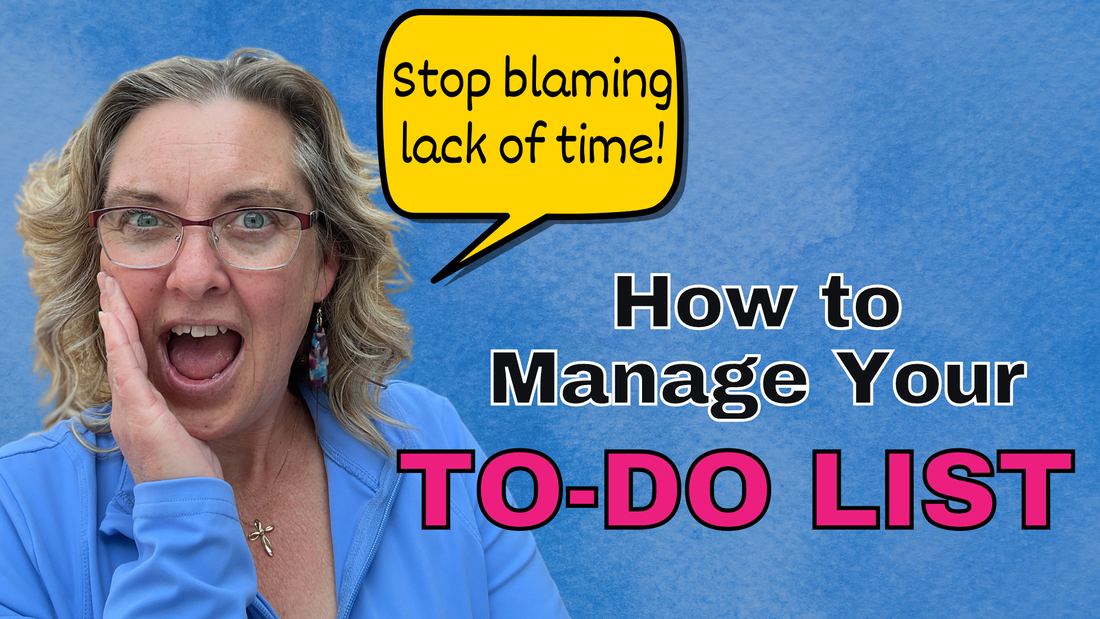
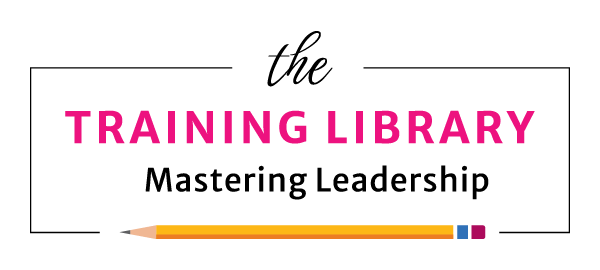

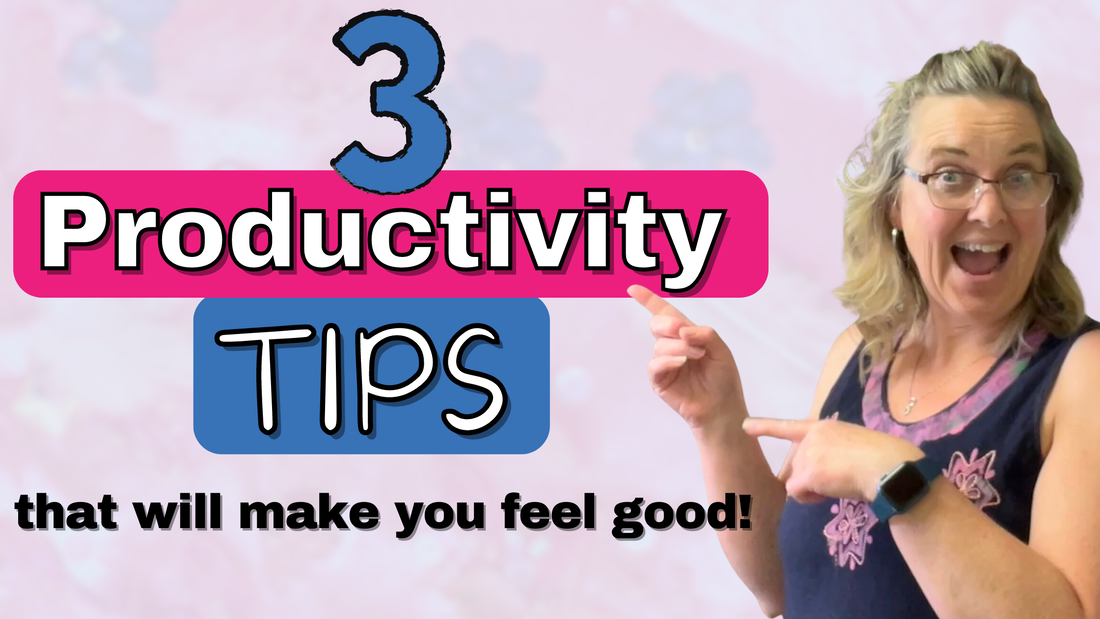
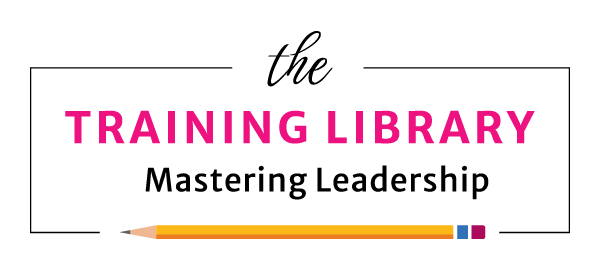

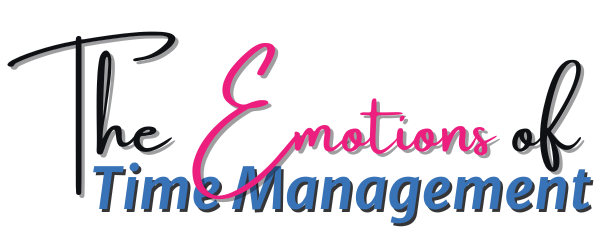

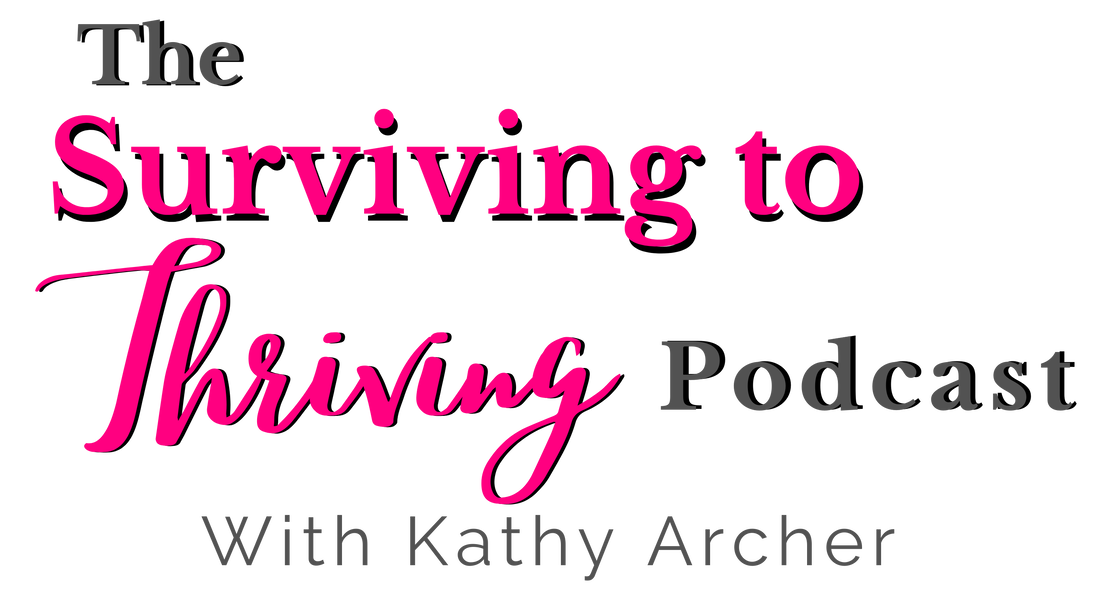
 RSS Feed
RSS Feed
